#animals of Indonesia
Text
Creature Awaits #242
Each week I plan to feature an amazing creature, admiring God's fantastic artistry. Hopefully it’ll brighten someone’s day to see something new and interesting if they haven’t seen it before. : )
The Pantone color of the year is "Peach Fuzz", so we'll dive into the second month of this relatively new year by featuring creatures of this cozy, comforting color. : )

(Stunning photography by Arttu (CC BY-NC 2.0 Deed))
The Moluccan Cockatoo
A.K.A: The Salmon-Crested Cockatoo
Scientific Name: Cacatua moluccensis
Region: Seram Island of Indonesia originally, though it is an introduced species to Oahu, Hawaii
Size: About 1.5'-1.7' (~46cm-52cm) tall
Interesting Notes: This pale peach parrot boasts one of the loudest calls of any bird worldwide at up to over 120dB - loud enough to possibly damage someone's hearing and comparable to a thunderclap or fireworks.
Sadly, this highly-intelligent, sociable and gentle bird's numbers in the wild sharply declined due an abundance of illegal unauthorized capture for the pet trade; however, protective efforts have been put in place to hopefully help these wild populations recover over time. (…Hopefully soon!)
#creatureawaits#beautiful animals#beautiful birds#elegant animals#Moluccan Cockatoo#Salmon-Crested Cockatoo#Cacatua moluccensis#animals of Indonesia
2 notes
·
View notes
Photo
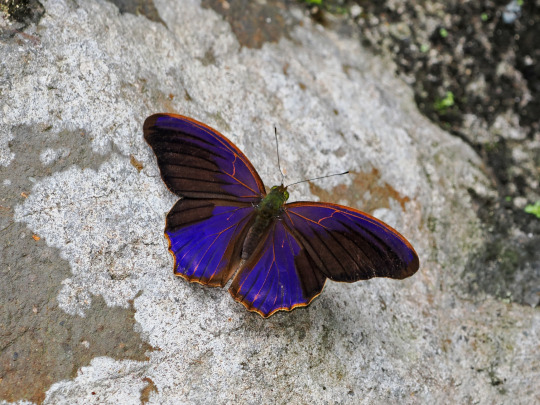
Royal Assyrian (Terinos terpander) in Bukit Lawang, North Sumatra, Indonesia.
8K notes
·
View notes
Note
WOAH can we see the skull if thats ok?? that sounds so cool (also only 20€????)


Also since it's hollow you can stick led lights in there for this sort of effect (pardon the mushy quality):

#like I said it's a real Asian water buffalo skull#these are carved by hand in Indonesia mostly in Bali I believe#to my understanding skull carving is a long standing tradition over there but most pieces like this seem to be made for & sold to tourists#I got this one second (third?) hand and I suspect that perhaps the seller didn't know what it was and what they're worth#and yet they graciously agreed to go through the trouble of packaging it carefully and shipping it to the other side of the country#which couldn't have been very easy since it's a big and heavy skull#answered#apricottheapricat#vulture culture#animal death#cw animal death#taxidermy#cw taxidermy
2K notes
·
View notes
Text

#chilchuck tims#chilchuck#dungeon meshi#dunmeshi#delicious in dungeon#anime#fanart#manga#art#artwork#doodle#indonesia#that's Indonesian sarung#bapak-bapak core#smoking#cigarette
545 notes
·
View notes
Text
"A 2019 sighting by five witnesses indicates that the long-extinct Javan tiger may still be alive, a new study suggests.
A single strand of hair recovered from that encounter is a close genetic match to hair from a Javan tiger pelt from 1930 kept at a museum, the study shows.
“Through this research, we have determined that the Javan tiger still exists in the wild,” says Wirdateti, a government researcher and lead author of the study.
The Javan tiger was believed to have gone extinct in the 1980s but only officially declared as such in 2008...
Ripi Yanuar Fajar and his four friends say they’ll never forget that evening after Indonesia’s Independence Day celebration in 2019 when they encountered a big cat roaming a community plantation in Sukabumi, West Java province.
Immediately after the brief encounter, Ripi, who happens to be a local conservationist, reached out to Kalih Raksasewu, a researcher at the country’s National Research and Innovation Agency (BRIN), saying he and his friends had seen either a Javan leopard (Panthera pardus melas), a critically endangered animal, or a Javan tiger (Panthera tigris sondaica), a subspecies believed to have gone extinct in the 1980s but only officially declared so in 2008.
About 10 days later, Kalih visited the site of the encounter with Ripi and his friends. There, Kalih found a strand of hair snagged on a plantation fence that the unknown creature was believed to have jumped over. She also recorded footprints and claw marks that she thought resembled those of a tiger.
Kalih then sent the hair sample and other records to the West Java provincial conservation agency, or BKSDA, for further investigation. She also sent a formal letter to the provincial government to follow up on the investigation request. The matter eventually landed at BRIN, where a team of researchers ran genetic analyses to compare the single strand of hair with known samples of other tiger subspecies, such as the Sumatran tiger (Panthera tigris sumatrae) and a nearly century-old Javan tiger pelt kept at a museum in the West Java city of Bogor.
“After going through various process of laboratory tests, the results showed that the hair sample had 97.8% similarities to the Javan tiger,” Wirdateti, a researcher with BRIN’s Biosystemic and Evolutionary Research Center, said at an online discussion hosted by Mongabay Indonesia on March 28.
The discussion centered on a study published March 21 in the journal Oryx in which Wirdateti and colleagues presented their findings that suggested that the long-extinct Javan tiger may somehow — miraculously — still be prowling parts of one of the most densely populated islands on Earth.
Their testing compared the Sukabumi hair sample with hair from the museum specimen collected in 1930, as well as with other tigers, Javan leopards and several sequences from GenBank, a publicly accessible database of genetic sequences overseen by the U.S. National Institutes of Health.
The study noted that the supposed tiger hair had a sequence similarity of 97.06% with Sumatran tigers and 96.87% with Bengal tigers. Wirdateti also conducted additional interviews with Ripi and his friends about the encounter they’d had.
“I wanted to emphasize that this wasn’t just about finding a strand of hair, but an encounter with the Javan tiger in which five people saw it,” Kalih said.
“There’s still a possibility that the Javan tiger is in the Sukabumi forest,” she added. “If it’s coming down to the village or community plantation, it could be because its habitat has been disturbed. In 2019, when the hair was found, the Sukabumi region had been affected by drought for almost a year.” ...
Didik Raharyono, a Javan tiger expert who wasn’t involved in the study but has conducted voluntary expeditions with local wildlife awareness groups since 1997, said the number of previous reported sightings coupled with the new scientific findings must be taken seriously. He called on the environment ministry to draft and issue a policy on measures to find and conserve the Javan tiger.
“What’s most important is the next steps that we take in the future,” Didik said."
-via Mongabay, April 4, 2024
#tigers#tiger#endangered species#extinction#conservation#environment#extinct animals#de extinction#indonesia#java#big cats#wild animals#good news#hope
636 notes
·
View notes
Text
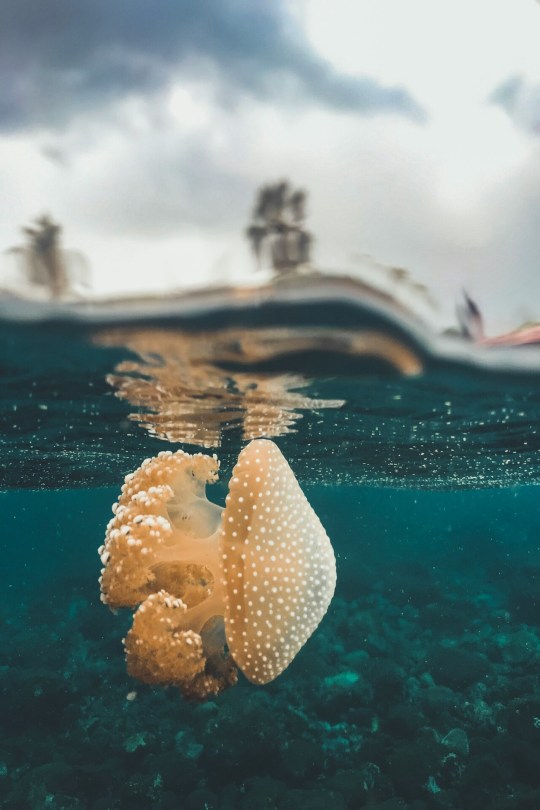
(by Naja Bertolt Jensen)
#vertical#landscape#animals#x#a#watsf#curators on tumblr#water#ocean#Naja Bertolt Jensen#jellyfish#Indonesia
436 notes
·
View notes
Text

Emerald Tree Monitor (Varanus prasinus), family Varanidae, found on New Guinea and nearby islands
photograph by Gunther Schmida
586 notes
·
View notes
Text
Some good news from Indonesia: the Sumatran Rhino Sanctuary in Way Kambas National Park has just announced that on November 25th their female Sumatran Rhino named Delilah gave birth to a healthy male calf!!!

(Photo credit: Indonesian Ministry of Environment and Forestry)
The as of yet unnamed calf is the second calf born at the sanctuary this month, and his mother Delilah was the second calf ever born at the sanctuary as well as the first captive bred Sumatran rhino to successfully give birth in captivity, so this is great news for captive breeding efforts of this species. There are only somewhere between 34 and 47 Sumatran rhinos in the wild, so captive breeding is incredibly important for this species survival. The sanctuary plans to eventually release the rhinos born at the sanctuary in order to help build the wild population back up. This baby is the fifth calf to be born at the sanctuary, and in addition to being Delilah’s first calf, he is also the first calf to be sired from his father, Harapan, who was originally born in the Cincinnati Zoo.

The mother and calf are currently being held in a naturalistic enclosure at the sanctuary (as the goal is to try to get them to live a life as similar to in the wild as possible) and are being heavily guarded to protect them from poachers. This species has suffered so much due to a combination of poaching for their horns as well as habitat loss. They are also pretty hard to keep and breed in captivity due to their shy nature, so this calf is amazing news!
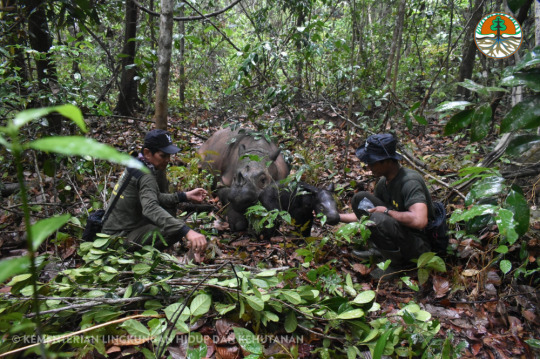
Also! Fun fact: this species of rhino is the closest living relative of the extinct Woolly Rhinoceros (Coelodonta antiquitatis). Which makes sense since the Sumatran rhino is the hairiest of all the living rhino species, which you can especially see with the babies.
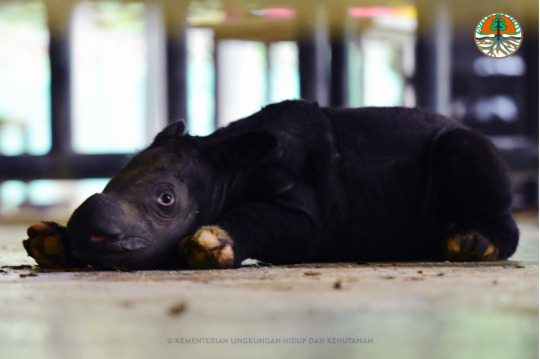
#indonesia#Indonesian wildlife#rhinoceros#sumatra#Sumatran rhinoceros#conservation#endangered species#good news#baby animals#baby rhino#wildlife#asian wildlife#animals#animal lover
329 notes
·
View notes
Text
Thinking
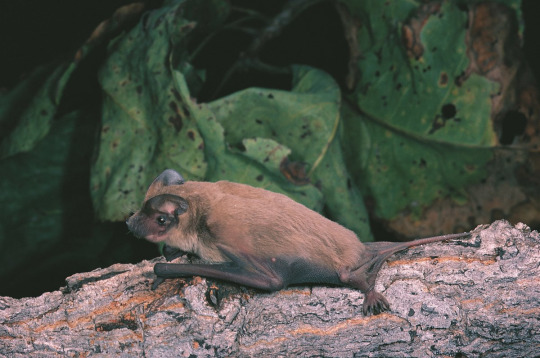
#Beccari's Free-Tailed bat#Bats of Indonesia#Bat of the Day#Daily Bat#bat#bats#batposting#cute bats#cute animals#You love to see them#Lil friend is just THINKING#the Thinker
149 notes
·
View notes
Text
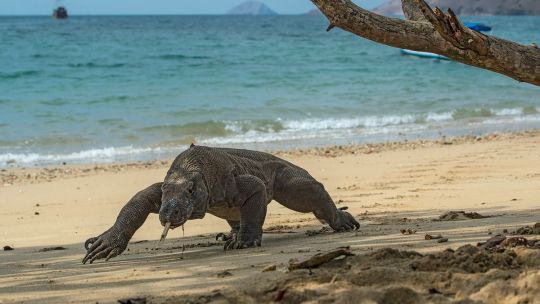
A Komodo dragon walks along a beach on Komodo island in Indonesia.
(Image credit: Guenterguni via Getty Images)
120 notes
·
View notes
Text

King bird of paradise. Aru, Indonesia
Photographed by Dustin Chen
112 notes
·
View notes
Text

Pavolia Reine🦚
#anime#anime aesthetic#anime art#artists on tumblr#original art#original work#original post#hololive#hololive id#hololive indonesia#pavolia reine
64 notes
·
View notes
Text
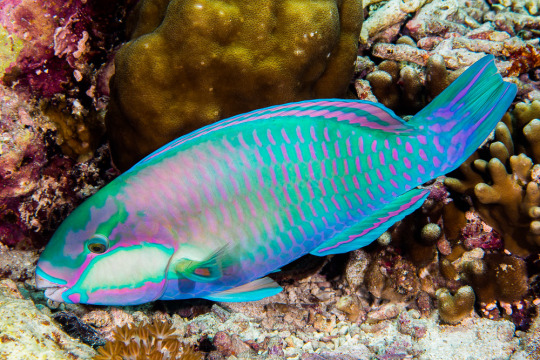
Bleeker's Parrotfish, Sumber Klampok, Bali, Indonesia
176 notes
·
View notes
Text
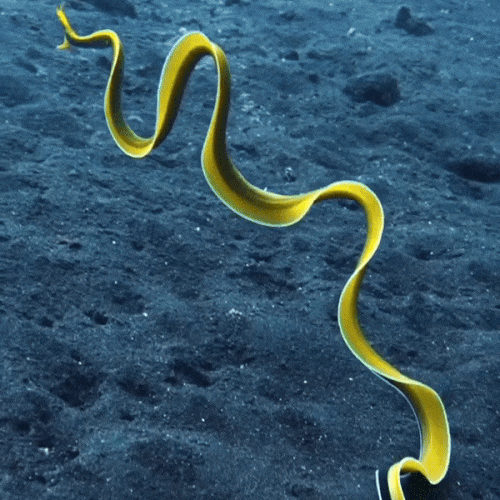
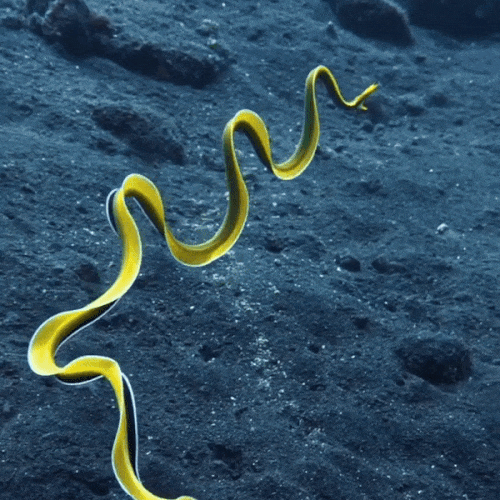
Ribbon eels are predominantly found in healthy coral reefs, where they burrow in the sand and hide under rocks, leaving only their heads and upper bodies visible. They use their long, antenna-like nostrils to sense vibrations, helping them hunt and capture prey with their tiny but very sharp teeth. Ribbon eels are believed to be protandric hermaphrodites, which means that they are born male, then change their sex to female as they mature. This is accompanied by a color change from black to blue to yellow.
🫧 Jasmine_underwater on IG
#eels#sea creatures#marine biology#marine life#sea#ocean#underwater#stim#owl post#animal stim#animals#scubadiving#indonesia#trivia
307 notes
·
View notes
Text
‘New’ Fanged Species of Frog Hunts Crabs Even Though it’s No Bigger Than a Quarter https://www.goodnewsnetwork.org/new-species-of-fanged-frog-hunts-crabs-even-though-its-no-bigger-than-a-quarter/
#good news#science#environmentalism#nature#environment#frogs#newly discovered species#animals#conservation#indonesia
56 notes
·
View notes
Text
[Warning: Graphic (some very graphic) shark-fishing pictures at the link.]
"Suhardi isn’t your average snorkeling guide. Born on the Indonesian island of Lombok, he’s spent his life on water. While he now seeks out sharks for the enjoyment of tourists, he once hunted sharks to help earn money to feed his family and educate his two children.
Suhardi was a fisherman for more than 20 years. He first started fishing working on his parents’ boat, but was then asked to join the crew of a shark boat where he was told he could earn a lot of money. Back on deck, he looks embarrassed to divulge what a meager wage it was, but finally confesses he earned around $50 for up to a month at sea.
Now he and 12 other former shark fishermen are part of The Dorsal Effect, an ecotourism company that helps ex-shark hunters find a new vocation. Each week, the team takes groups of tourists, schoolchildren and university students to off-the-grid locations and guides them around pristine reefs. Each trip is designed to take guests on an exploratory journey of both the shark trade and marine conservation through the eyes of the Sasak people of Lombok.
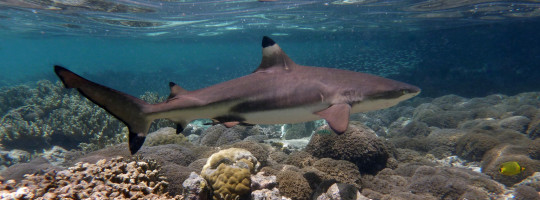
Lombok is a hotspot for marine diversity, sitting just east of the Wallace Line, a biogeographical boundary separating Asia and Australia and their respective fauna. Pristine coral gardens and around 80 species of sharks can be found in its waters. The island is also part of the world’s largest shark-fishing nation. Only the whale shark (Rhincondon typus) is protected in Indonesia; all other sharks can be legally caught.
The Dorsal Effect first launched in 2013, a year after Suhardi met Singaporean ecologist Kathy Xu, who had traveled to Lombok to find out more about the shark trade. The diminutive but quietly determined Xu wanted to protect sharks, but because she knew shark fishing was poorly paid and dangerous, she wanted to hear the fishermen’s stories too. They told her how once they could fish for sharks close to shore, but now with the shark population dropping, the fishermen said they needed to travel farther out to sea, only to come home with a relatively poor catch. The reduced catch also meant reduced pay, so they often couldn’t cover their costs...
Yet, when Xu asked why fishers didn’t seek out another trade, she learned they didn’t want to be separated from the sea. They saw it as part of their heritage.
But as they spoke longer, the shark fishermen talked about the coral gardens that could be found under the waves, ones that only they knew about. Inspired by a whale shark diving trip she’d taken with scientists on the Great Barrier Reef, Xu had an idea. “If such spots exist,” she recalls telling the fishers, “I could take tourists out with you and pay you more than you earned shark fishing”.
At first, Xu guided the former shark fishermen on how to become eco-friendly tour operators. They dropped anchor away from the reef, served guests plant-based dishes, and made sure all trash was taken back to shore. But then Xu saw that something special was happening: The former fishermen had started to take the guest experience into their own hands, making sure tourists felt at home. Suhardi painted “Welcome” in large letters over the front of his boat, fitted green baize to the top deck for outdoor seating, and hung curtains in the cabin so his guests could enjoy some shade.
Suhardi has already bought a new boat with his earnings from snorkeling trips. “Every day is my best day,” laughs Suhardi, whose smile always travels from his mouth to his eyes.
While they were receiving tourists from across the globe, there was another group that Xu wanted to reach out to. “I think it was the teacher in me who felt impassioned about influencing the young,” she says. She reached out to schools and created a five-day program that would help students understand the shark trade and local conservation efforts. During the program, paid for by the school and students, participants would not only meet the ex-shark fishermen so they could ask them about their lives, but also hear from NGOs such as the Wildlife Conservation Society about their efforts to slow the trade. The Dorsal Effect also hired marine biologists to host nightly lectures and help the students with their field surveys...
The students were faced with the realities of the fishing trade, but they were also encouraged to take a balanced view by The Dorsal Effect team. The villagers weren’t just taking the fins, and throwing away the rest of the shark; they processed every piece of the animal. While they did sell the meat and fins to buyers at the market, they also sold the teeth to jewelers, and the remains for pet food.
The Dorsal Effect also takes students on an excursion to the fishermen’s village, a small island that lies off the coast of Lombok. Marine biologist Bryan Ng Sai Lin, who was hired by The Dorsal Effect team, says that on one trip with students he was surprised by how quickly the young people understood the situation. “One of them said it’s good to think about conservation, but at the same time these people don’t really have any other choice,” Lin says....
Conservation scientist Hollie Booth of Save Our Seas, which does not work directly with The Dorsal Effect, says the need to provide legal profitable alternatives to shark fishing is critical: “We are never going to solve biodiversity and environment issues unless we think about incentives and take local people’s needs into account. These kinds of programs are really important.”"
-via Mongabay, December 15, 2023
#shark#sharks#fish#marine biology#marine animals#sea creatures#fishing#marine life#marine conservation#endangered species#overfishing#indonesia#lombok#school#field trip#ocean#pacific ocean#biodiversity#conservation#environmentalism#fishermen#scuba#scubadiving#underwater#diving#coral reef#ocean life#good news#hope
695 notes
·
View notes